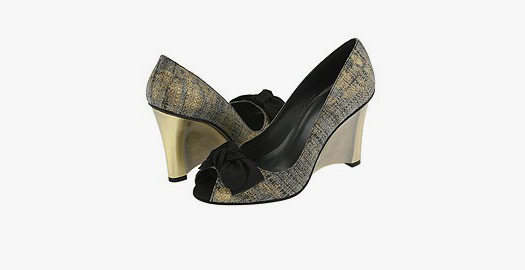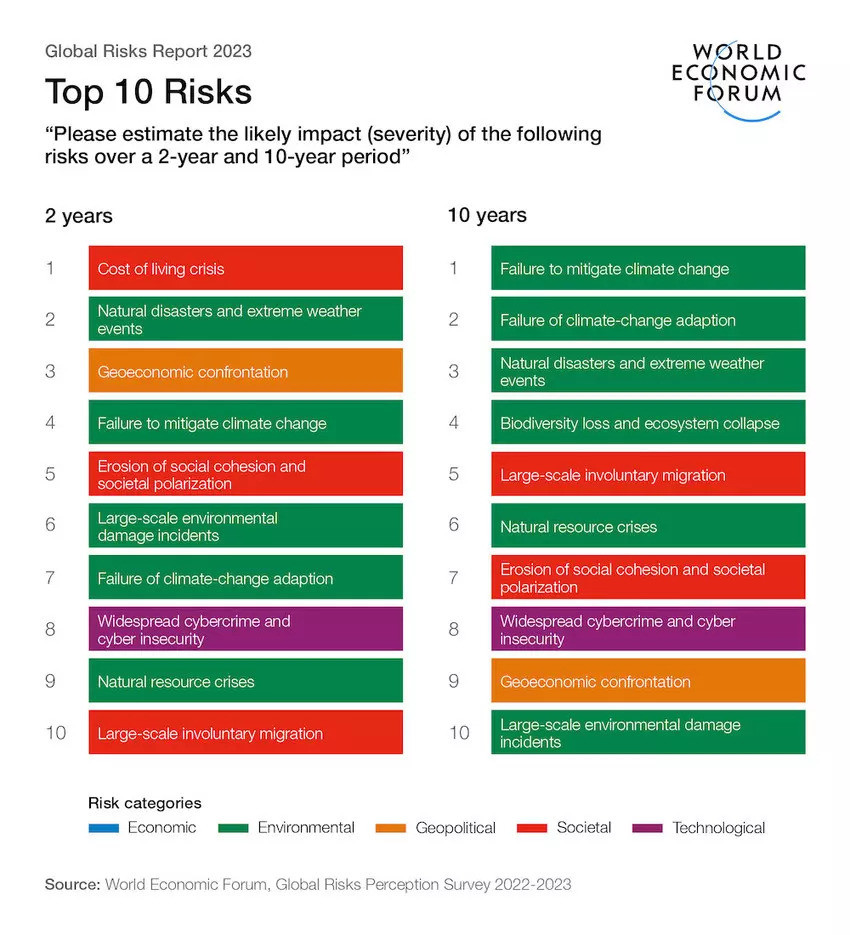
August 19, 2010
The Costs of Ownership: Why Copyright Protection Will Hurt the Fashion Industry

After three false starts, the Council of Fashion Designers of America finally pulled together a viable bill that will give copyright protection to fashion designs. While the previous three versions of this bill were dead in the water without the support of the much larger (and savvier) American Apparel and Footwear Association, they have decided to support this version and it looks like it’s going to pass.
Although this version of the bill is far less ridiculous than earlier versions, I still think it’s a terrible mistake.
I would be the last one to claim that fashion designs aren’t artful enough to deserve copyright protection, but that’s not really the issue. Copyright protection is a means to an end and that end is the promotion of innovation. Oddly enough, in the fashion industry, the lack of copyright protection has actually increased innovation and any effort to curb a designer’s ability to freely sample from the history of fashion is only going to hurt the industry — artistically and economically.
The Innovative Design Protection and Piracy Prevention Act, as it stands now, would leave all previous fashion designs in the public domain, but new designs would be eligible to receive a protection (with no registration necessary) as long as they “provide a unique, distinguishable, non-trivial and non-utilitarian variation over prior designs for similar types of articles.” Companies with enough money to do so can hire lawyers to convince judges (who better start honing their fashion knowledge) that their client’s design is uniquely different from anything else ever made in the history of fashion AND that some other designer’s work is “substantially identical.”
It’s worrisome to think about the frivolous litigation that such legislation could introduce (that’s not exactly what our over-taxed court system needs right now) as well as the ethical problems associated with conferring an arbitrary right of ownership to any Joe Blow who decides to lay claim to a certain combination of design features which used to belong to the public domain.
Right now, designers pore over vintage magazines and patterns and visit museum archives in order to find inspiration for the next season’s look, cherry picking design elements that feel fresh and in line with the current zeitgeist. It’s a refreshingly open process unhindered by legal consultations. Those archives could become battlefields where litigants try to find evidence to support their assertion that a design is or is not unique. The geeky librarian in me is worried that some powerful people may attempt to limit access to particularly rich collections of design history and some unscrupulous types may destroy or hide rare materials that prove that their new design isn’t as unique as they claim.
The scope of items that the bill intends to protect is larger than you probably think. It’s not just ornate red carpet gowns: it also includes coats, gloves, shoes, hats, purses, wallets, duffel bags, suitcases, tote bags, belts, eyeglass frames and underwear. I can only imagine the lengths to which some companies with deep pockets will go to lay claim to an exclusive right to an iconic popular design.
The sad thing is that just about everyone will suffer (well, except for lawyers). Consumers will pay higher prices (someone has to pay those legal fees) and they won’t have the same access to the plethora of knock-offs that allow them to participate in global fashion trends without paying aristocratic prices. Designers who can’t afford legal counsel will worry about being accused of copying and they probably won’t be able to sue if someone copies them because, well, litigation is expensive.
Historically, fashion designers have been denied copyright protection because the courts decided long ago that utilitarian articles should not be protected by copyright. Otherwise, a handful of designers would own the seminal building blocks of our clothing. Every time a new blouse would be made, licensing fees would need to be paid to the supposed originator of that particular sleeve or collar.
Although this bill tries to get around that problem by making the overall design, not elements of the design, protectable, once any design is owned by someone, it has a chilling effect on other designers who intend to tap into the same trend. Supporters of the bill say the copyright period for fashion designs would only be three years…but three years is an eternity in the fast-changing world of global fashion. Now that this final version of the bill has eliminated a searchable registry of protected designs, I’m not sure how designers will be able to figure out what they are not allowed to make. And according to law professors Kal Raustiala and Chris Sprigman, manufacturers and retailers could also be held liable for any copies they sold.
Some designers in the U.S. insist that it’s only in America that they get no respect for their art — that there’s protection in other markets. But if you take a look at the legal structure for protection in the other two largest national fashion industries, you’ll see that the coverage is virtually ineffectual. Japanese Design Law covers apparel, but only if the item is unique: no identical or similar design can have existed before. This is reminiscent of the novelty standard for U.S. patent protection, which U.S. fashion designers notoriously fail to receive.
In the European Union’s Community Design System, apparel is protected, with a less stringent novelty standard than Japan. But despite a very strong “fast fashion” industry in the EU, including H&M and Zara, very few designers register their garments or take their cases to court. In turns out that the problem in the EU is that the novelty standard is too low. All a copyist needs to do is make a minute change to a registered design and then they can register it as their own.
In a recent TED.com talk, I argued that one reason that fashion design has been elevated to an art form is precisely because of the lack of copyright protection. So, while fashion design doesn’t qualify for the same legal protections that other artistic creations have (because the courts have decided that fashion is too utilitarian), the creative possibilities for design and the rapid pace of innovation have increased exponentially. Unlike musicians, filmmakers, photographers, writers, sculptors and graphic designers, fashion designers may incorporate just about any element of their peers’ creative work into their own design.
Anyone familiar with the justification for copyright protection — without ownership there is no incentive to innovate — might be surprised by the critical and economic success of the fashion industry. A complex creative ecology has developed in the fashion world that balances a designer’s need to both stand out and fit in. Since anyone can copy anyone else, they do. The almost magical result of this process is the establishment of trends. Some designers have ascended to the highest echelons of the fashion world and are well-known for setting new trends with their original designs, but all designers admit that they’re inspired by “the street,” where people mix and match their own personal looks, combining a new Marc Jacobs bag with grandma’s vintage sweater with Army surplus boots.
But just because copying is legal doesn’t mean it’s acceptable. In order to succeed, designers have to develop a signature style — a look that everyone will instantly recognize as theirs. Designers who have reputations as innovators don’t want to be accused of copying, so they have a strong incentive to come up with something new every season that’s unique to them and their signature style.
There are several reasons why the fast fashion giants like H&M, Zara, Forever 21Â and Topshop haven’t destroyed the business of high-end designers. One obvious reason is that the customer who shops for the $19.99 version of a Chanel skirt is quite simply not the same customer who buys clothing in a Chanel boutique. That’s one reason that so many A-list designers — including Karl Lagerfeld and Vera Wang — have decided to knock themselves off and create lines for lower-end retailers like Target and Kohl’s. Far from cannibalizing their own product sales, these designers realized that they could expand their clientele and their brand by marketing a variety of products at vastly different price-points.
Over and over again, the courts have decided not to give extra protection to the designers who have complained about fast fashion knock-offs because designers have not been able to demonstrate that it has hurt their business.
In fact, the fast fashion industry has actually strengthened the fashion industry overall since it has accelerated the market for global fashion. The big bonus for high-end designers is that their influential designs become influential even faster than before. And because trends are established so quickly, fashionistas who buy the products that top designers sell have an incentive to move on to the next new thing when the masses have settled on the trendy knock-off. By the time the next season comes around, designers must compete all over again for customers hungry for the new designs that best capture the zeitgeist.
Of course this culture of copying has affected the creative process. One lovely side-effect is that high-end designers find themselves challenged to create truly innovative and surprising designs that they believe will be hard to knock-off. Stuart Weitzman, for instance, said that copyists forced him to innovate, as he did with the Bowden-Wedge, whose heel shape requires special materials like titanium or steel. A knock-off using cheaper materials would snap.
The ironic thing is that the fashion industry doesn’t really talk about how revolutionary it really is. The fact that people can steal from one another’s designs is often considered fashion’s dirty little secret.
But it’s time to let the cat out of the bag.
With the widespread use of digital technology, industries with a great deal of copyright protection are being forced to operate as if they don’t have any copyright protection. Their creative work is being shared, whether they like it or not. Some might say that copyright protection has become their crutch — they can’t figure out how to operate without it. We have to wonder whether the fashion industry has some lessons it could teach the music, TV, film and publishing industries. The last thing that fashion designers need is to become dependent on the same crutch that has crippled the media industries.
Observed
View all
Observed
By Johanna Blakley
Recent Posts
Courtney L. McCluney, PhD|Essays
Rest as reparations: reimagining how we invest in Black women entrepreneurs Food branding without borders: chai, culture, and the politics of packaging Why scaling back on equity is more than risky — it’s economically irresponsible Beauty queenpin: ‘Deli Boys’ makeup head Nesrin Ismail on cosmetics as masks and mirrors
 Johanna Blakley is based at the USC Annenberg
Johanna Blakley is based at the USC Annenberg 


